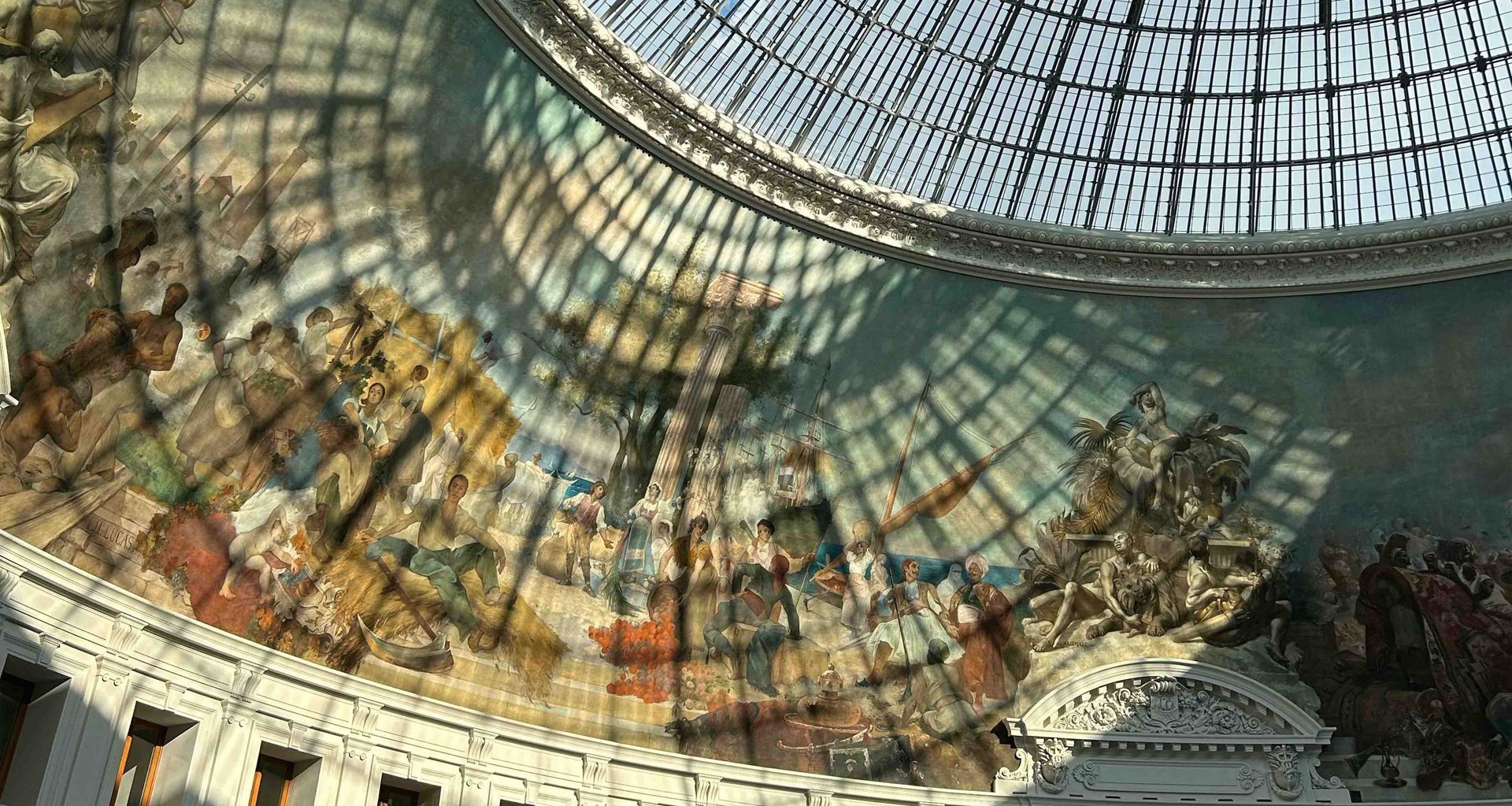The Intersection of Art and Architecture

At its core, architecture is an expression of human ingenuity through spatial design, where art serves as the creative force that infuses these spaces with soul. The interaction between art and architecture stands as a testament to the fusion of form and function, transforming buildings into immersive experiences – evoking emotion and provoking thoughts. Within this intersection, the principles and elements of art converge in architectural design, imbuing spaces with meaning, identity, and cultural significance.
ELEMENTS OF DESIGN
At the heart of this union are shared elements such as line, shape, colour, texture, and form, which define the visual language of architecture. Lines delineate structural integrity, guiding the eye along pathways and defining spatial boundaries, while colour has the ability to influence mood and perception. Texture enriches the tactile qualities of architecture, from the natural warmth of reclaimed wood to the cool touch of polished concrete. The careful crafting of form and the arrangement of space invites occupants into an immersive sculptural experience. Each curve and angle contributes to a dynamic composition, transforming the architecture into an ever-evolving piece of living art.
PRINCIPLES OF DESIGN
Principles including balance, proportion, rhythm, and unity accentuate the artistry of architectural composition. Whether through symmetrical arrangements or asymmetrical juxtapositions, balance ensures visual equilibrium, establishing harmony and coherence. Proportion dictates the scale and relationship of elements within a design, while rhythm infuses spaces with movement and vitality. Unity integrates diverse elements into a cohesive whole, forging a narrative that resonates with cultural context and societal values.
At its core, architecture is an expression of human ingenuity in spatial design, where art serves as the creative force that infuses these spaces with soul.
ENVIRONMENTAL CONTEXT
Beyond formal considerations, architecture as an art form transcends aesthetics to address broader socio-cultural, environmental, and experiential concerns. Architects engage with art to enrich the built environment, from the organic fluidity of biomimetic structures to the adaptive reuse of historic landmarks. By blending landscape architecture with sculptural elements and immersive artworks, projects have the ability to preserve legacy while encouraging community engagement and ecological sustainability.
TECHNOLOGY
Digital technologies further expand the possibilities of architectural expression, enabling designers to explore parametric forms, interactive installations, and virtual environments. Innovations such as parametric modeling and augmented reality empower architects to push creative boundaries, engaging users in participatory design processes and creating immersive spatial narratives.
The symbiosis of art and architecture highlights the importance of thoughtful design in shaping human experiences. By addressing principles and elements of art, architects imbue spaces with meaning, functionality, and aesthetic appeal. Whether in residential or commercial settings, the integration of art and architecture elevates everyday spaces into inspiring domains, enriching lives, and shaping connections with the built environment.
